May 19, 2025—Maryland's oyster population has grown significantly in the last 20 years, according to a benchmark stock assessment issued by Maryland's Department of Natural Resources and the University of Maryland Center for Environmental Science.Read Press Release
Why Are Oysters and Oyster Reefs Important for the Chesapeake Bay?
Eastern oysters, Crassostrea virginica, are a critical component of the Chesapeake Bay ecosystem, known as a keystone species. With their clean, hard surfaces and intricate three-dimensional structure, large oyster reefs attract a wide variety of life. They provide food, cover, and habitat for hundreds of small and juvenile fish, crabs, shrimp, and other species, which in turn provide prey for larger fish and crabs.
These shellfish are also prolific filter feeders. They remove light-blocking algae from Bay waters and help remove excess nutrients like nitrogen and phosphorus. And healthy reefs are home to other filter feeders, as well, including barnacles, encrusting bryozoans, sea anemones, and hooked mussels.
Without oysters, the quality of the Bay ecosystem suffers. Without their filtration clearing the water for light to penetrate, bay grasses can struggle to grow. Without healthy grass beds and reef habitat that provide refuge from predators and ample prey to feed on, juvenile fish and crabs may not survive to adulthood. In other words, more oysters equal better water quality, more fish and crabs, and healthier underwater grass beds.
A thriving population affects humans, too. Without it, the Bay's traditional seafood industry will continue to struggle. The good news is that when we bring back oysters, all of their benefits come back with them.
What Happened to Oysters in the Chesapeake Bay?
Currently, oyster populations in the Bay are at a small fraction of their historical population size. The storied shellfish and their vertical reefs once posed navigational hazards to early Europeans sailing in the Bay. Their abundance created a Chesapeake oyster-harvesting industry that became the largest in the world by the late 19th century.
But decades of overharvesting, pollution, and disease have contributed to the decline of populations in the Bay. Destructive harvesting techniques led to the loss of roughly three-quarters of the Bay’s reefs between 1860 and 1920. As the population of the watershed continued to grow, so did pollutants. Due to an overabundance of nutrients like nitrogen and phosphorus, Bay waters began to grow too much algae, which led to large dead zones—areas without enough oxygen to sustain life. Loss of forest land and inadequate erosion control left oyster beds silted over and oyster larvae with no place to set. Beginning in the 1950s, the Bay was hit with two diseases—MSX and Dermo—that are caused by parasites that attack and frequently kill the mollusks, though they are harmless to people. Together, continued overharvesting, pollution, and disease devastated the Bay’s populations.
What Is the Current State of Oyster Populations in the Chesapeake Bay?
In Maryland, the oyster population has tripled in the last 20 years, according to the 2024 Benchmark Oyster Stock Assessment by the Maryland Department of Natural Resources. Experts attribute this success to multiple factors, including significant large-scale oyster restoration efforts, several years of strong natural reproduction thanks to favorable environmental conditions, and harvest restrictions implemented since 2018.
In February 2023, Virginia's evaluation found that oyster stock was at its best condition in a generation, and even extended the season for the first time since 1987-88. Virginia's total wild oyster harvests has remained stable at around 600,000 bushels for the past several years, partly due to a rotational harvest system. This system reduces pressure on certain harvest bars by only opening them to harvest once every three years. In addition, a state supported replenishment program helps to plant shell on harvest areas, increasing habitat for baby oysters (spat) to attach and grow.
What Is Being Done to Restore Oysters Reefs to the Bay?
In 2014, Maryland and Virginia each committed to restoring oyster populations and reef habitat in 11 rivers by 2025. Areas in which this large-scale oyster restoration has been carried out to bring back reefs and restore their function in the ecosystem are starting to see the benefit of increasing populations and stable or growing reef habitat.
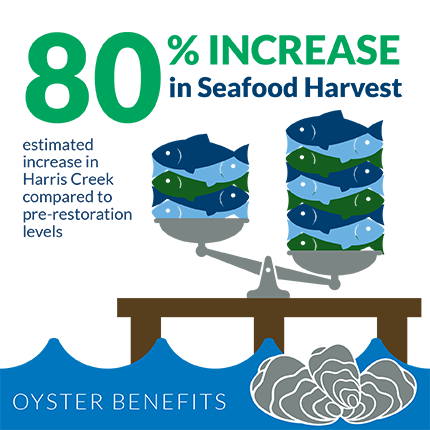
Restored reefs in Harris Creek, on Maryland’s Eastern Shore, can now filter the entire volume of the creek in less than 10 days during the summer. Each year, the reefs are estimated to remove an amount of nitrogen equivalent to 20,000 bags of fertilizer—a service valued at more than $1.7 million.
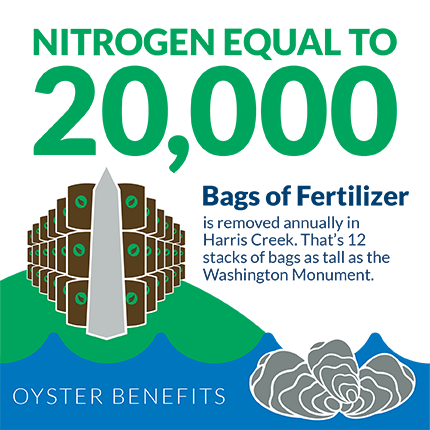
Pollution, habitat loss, overharvesting, and disease are the main factors limiting oyster recovery in the Chesapeake Bay. Full implementation of the Chesapeake Bay Clean Water Blueprint, the science-based plan to restore the Bay to health, is the primary means by which we can achieve improved water quality and reduce the threats to this crucial shellfish's survival.
Until populations improve enough to replenish reefs on their own, we will need to continue restoration efforts by placing shell and juvenile oysters on the bottom to kickstart the process.
How Can I Help Oysters Recover in the Chesapeake Bay?
There are many ways you can help us restore oyster populations and improve water quality in the Bay:
- SPREAD the word to your neighbors and friends about how important oysters are to the health of the waters and wildlife of the Bay.
- RECYCLE your oyster shells through CBF’s shell recycling program and support restaurants that participate in shell recycling programs—shell availability is one of the biggest limiting factors in oyster restoration.
- SUPPORT local oyster farmers by buying directly from local farms or at farmers’ markets.
- STAND UP for oysters by signing our pledge.
- SHARE your support for oyster recovery—and especially the unique value of vertical oyster reefs—by writing a letter in your local paper or to state officials responsible for oyster restoration.
- VOLUNTEER with CBF's active oyster restoration program by building reef balls, cleaning shells, or becoming an oyster gardener. Visit cbf.org/oysters for more info.
- MAKE A DONATION to support our restoration program by giving the gift of oysters from our online Giving Catalog at cbf.org/catalog.
From Our Blog
-
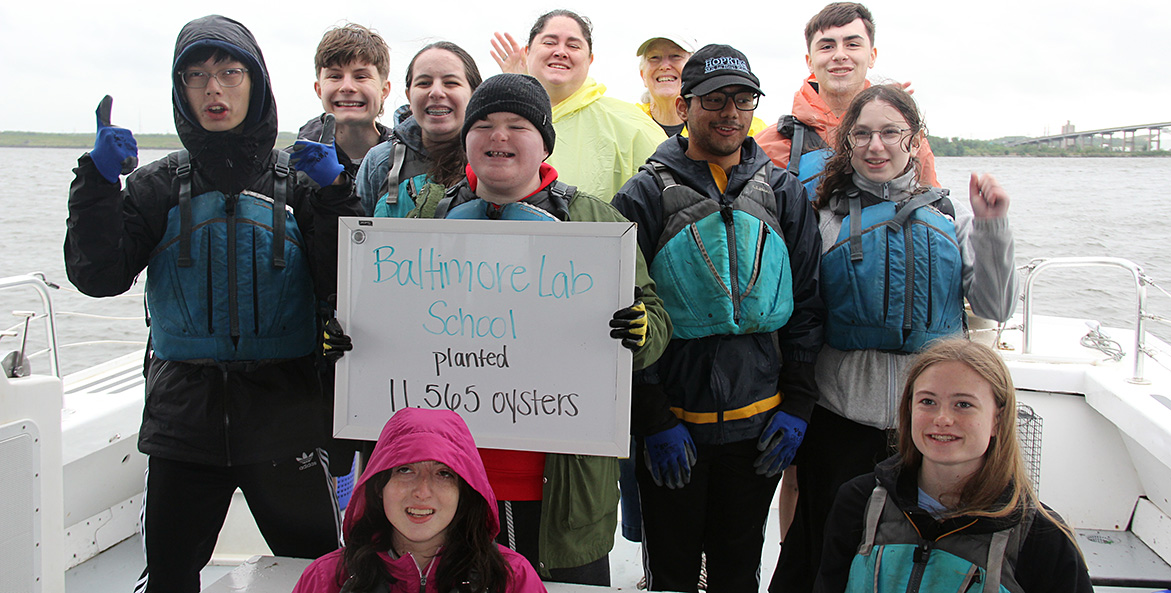
Baltimore Harbor Oyster Sanctuary Now Accepting New Tenants
May 16, 2025
Throughout the decade, students from the Baltimore Lab School have grown approximately 70,295 oysters in the Baltimore Harbor. That number includes over 11,500 oysters the kids planted one day in May.
-
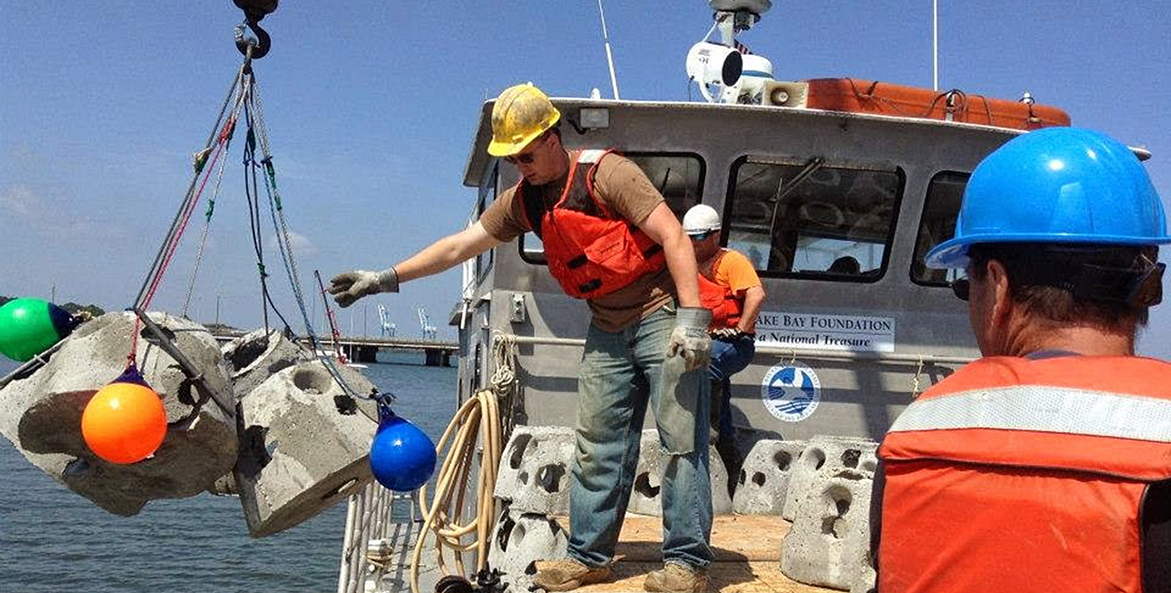
Harnessing the "Little Bivalve" to Produce Big Results for the Bay
April 11, 2025
Federal investment in large-scale oyster restoration in the Bay's rivers provides support for community efforts and is reaping benefits downstream.
-
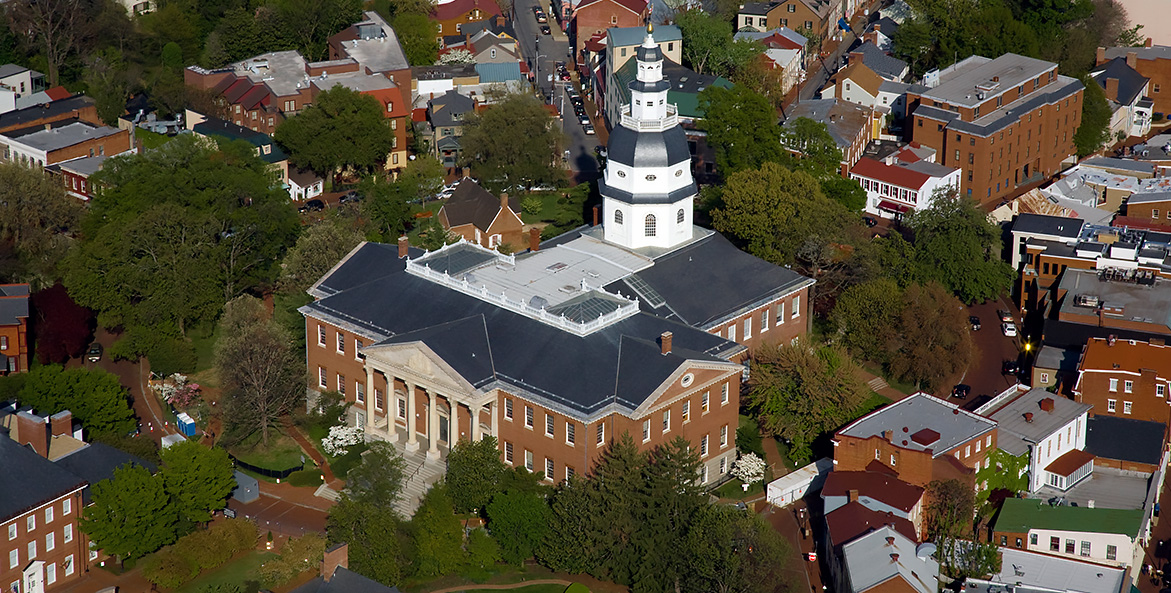
Let's Turn Promises into Progress for the Chesapeake Bay
January 23, 2025
Governor Wes Moore and legislative leaders have an important, though unenviable, task ahead for the remainder of the 2025 General Assembly session: meeting Maryland’s ambitious goals for environmental progress and climate resiliency while navigating a $3 billion budget shortfall.
| Items 1 - 3 of 20 | 1 | 2 | 3 | 4 | 5 | 6 | 7 | Next |
Multimedia
-
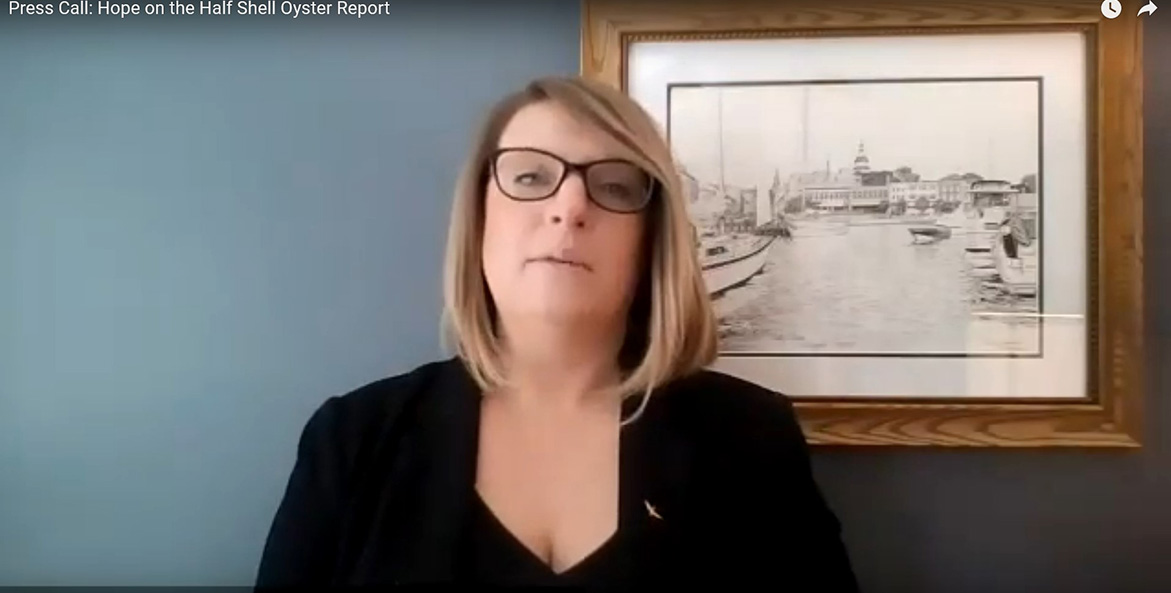
Hope on the Half Shell Oyster Report - Press Call
15 Feb 2024 00:41:52The Chesapeake Bay Foundation released a report on February 15, 2024, entitled “Hope on the Half Shell: Harnessing Oysters to Build Ecological and Community Resilience.” Several experts participated in the press call to explain the report and what it means for our Bay and communities.
-
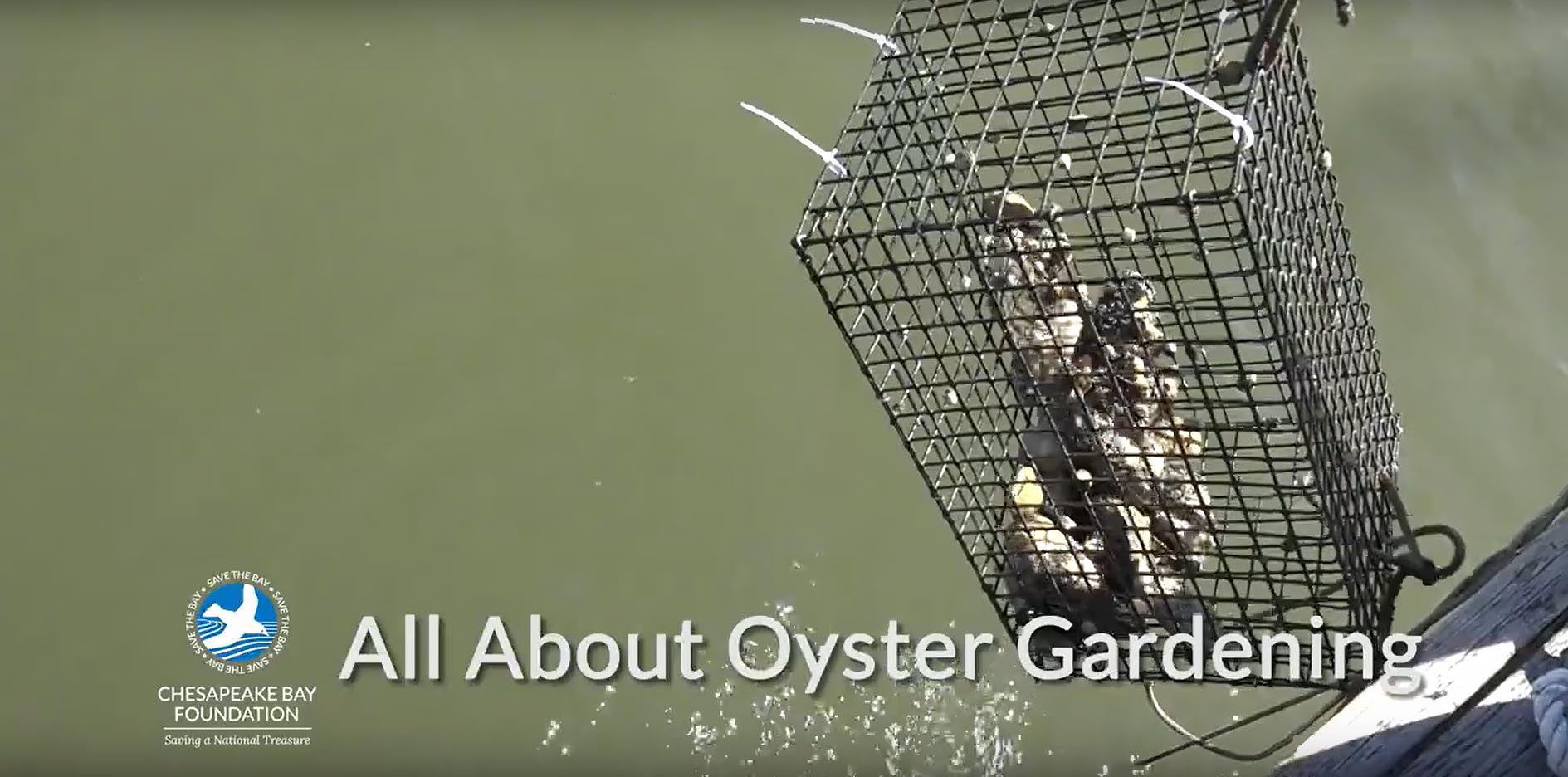
All About Oyster Gardening
17 Mar 2023 00:01:44Find out all about oyster gardening along the Chesapeake Bay! CBF oyster gardeners raise baby oysters in wire cages hung off waterfront docks and care for them for a year until they can be planted on sanctuary reefs.
-
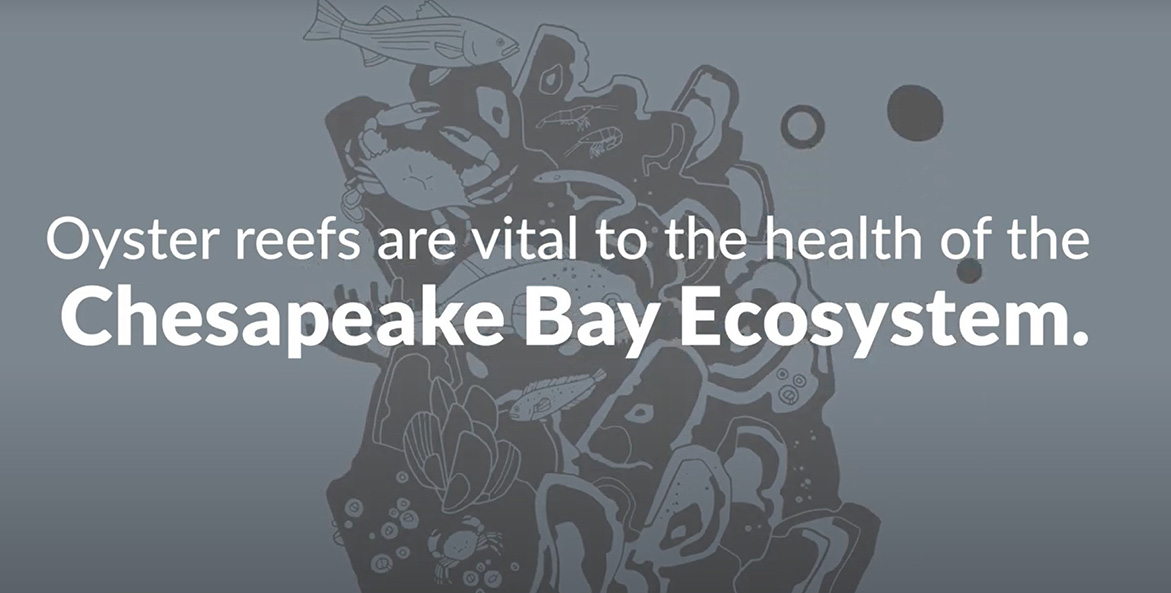
Who Lives on an Oyster Reef?
22 Jun 2022 00:01:30Oyster reefs create vital habitat for more than 300 species of Chesapeake Bay critters. Meet 10 of our favorites in this animated video.
| Items 1 - 3 of 20 | 1 | 2 | 3 | 4 | 5 | 6 | 7 | Next |


